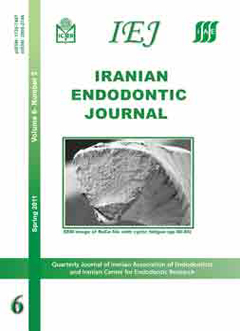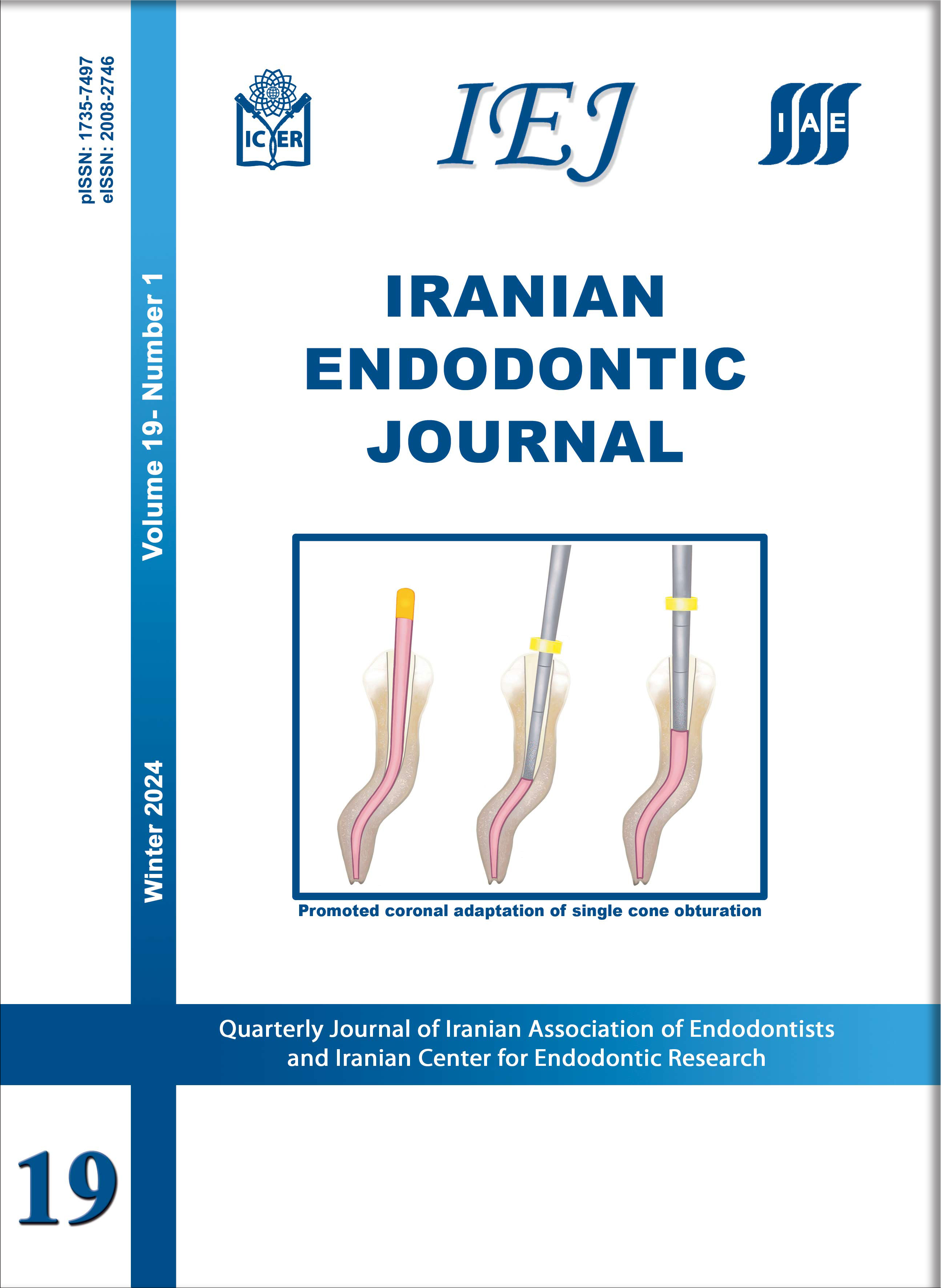Antibiotic prescription for endodontic treatment: General dentist knowledge + practice in Shiraz
Iranian Endodontic Journal,
Vol. 6 No. 2 (2011),
16 March 2011,
Page 54-59
https://doi.org/10.22037/iej.v6i2.2091
INTRODUCTION: Diseases of the dental pulp and periapical tissues are chiefly caused by microorganisms. Antibiotics are used in some endodontic cases; however, successful cases can predominantly be achieved by mechanical and chemical cleaning of the canal or surgical intervention.
MATERIALS & METHODS: The aim of this study was to determine the knowledge of General Dental Practitioners (GDPs) in Shiraz in respect to antibiotic prescriptions during and after endodontic treatment. A one-page questionnaire was sent to 200 active general dentists. Of the 120 surveys returned, 93 were accepted. The data were analyzed using t-test, Chi-square, ANOVA and Fisher’s Exact Test.
RESULTS: Only 29% of dentists had full knowledge (correct answers to all questions) of antibiotic prescription protocols in pulpal and periapical disease. Amoxicillin 500 mg capsule was the drug of choice of dentists. Total of 42% of GDPs had full knowledge of antibiotic prescription protocols for persistent or systemic infections cases. GDPs more recently qualified had slightly greater knowledge compared to GDPs with experience; however, this difference was not significant. Also, there was no significant difference between genders.
CONCLUSION: General practitioners’ knowledge about antibiotics seems inadequate and further education is recommended to update the practitioners.



